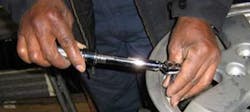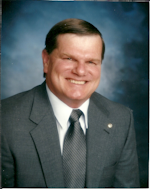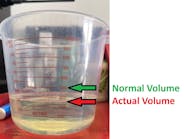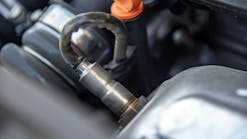The process to remove a tire with a TPMS sensor
Aug. 13, 2015
- Check the TPMS prior to any service work and record its operation. This will confirm sensor operation prior to work being performed and avoids the question of damage that may have been caused during disassembly/assembly. Record the sensor IDs with a TPMS tool or scanner if they are available.
- Remove the valve stem core to relieve the pressure.
- Remove the valve stem nut and push the TPMS sensor into the tire so it falls from the rim.
- Break the bead on the tire.
- Remove the first bead and STOP!
- Reach into the tire and remove the sensor from the tire before proceeding.
- Remove the second bead.
- Reinstall the sensor with a new grommet, retaining nut, and if necessary a valve core. Use a torque wrench to tighten to the proper spec.
- Rotate the tire machine turntable so the valve stem on the wheel is 90 degrees away from the head on the tire machine.
- Mount the tire.
- Set the tire pressure to the proper pressure and install a new valve cap.
Voice Your Opinion!
Voice Your Opinion!



